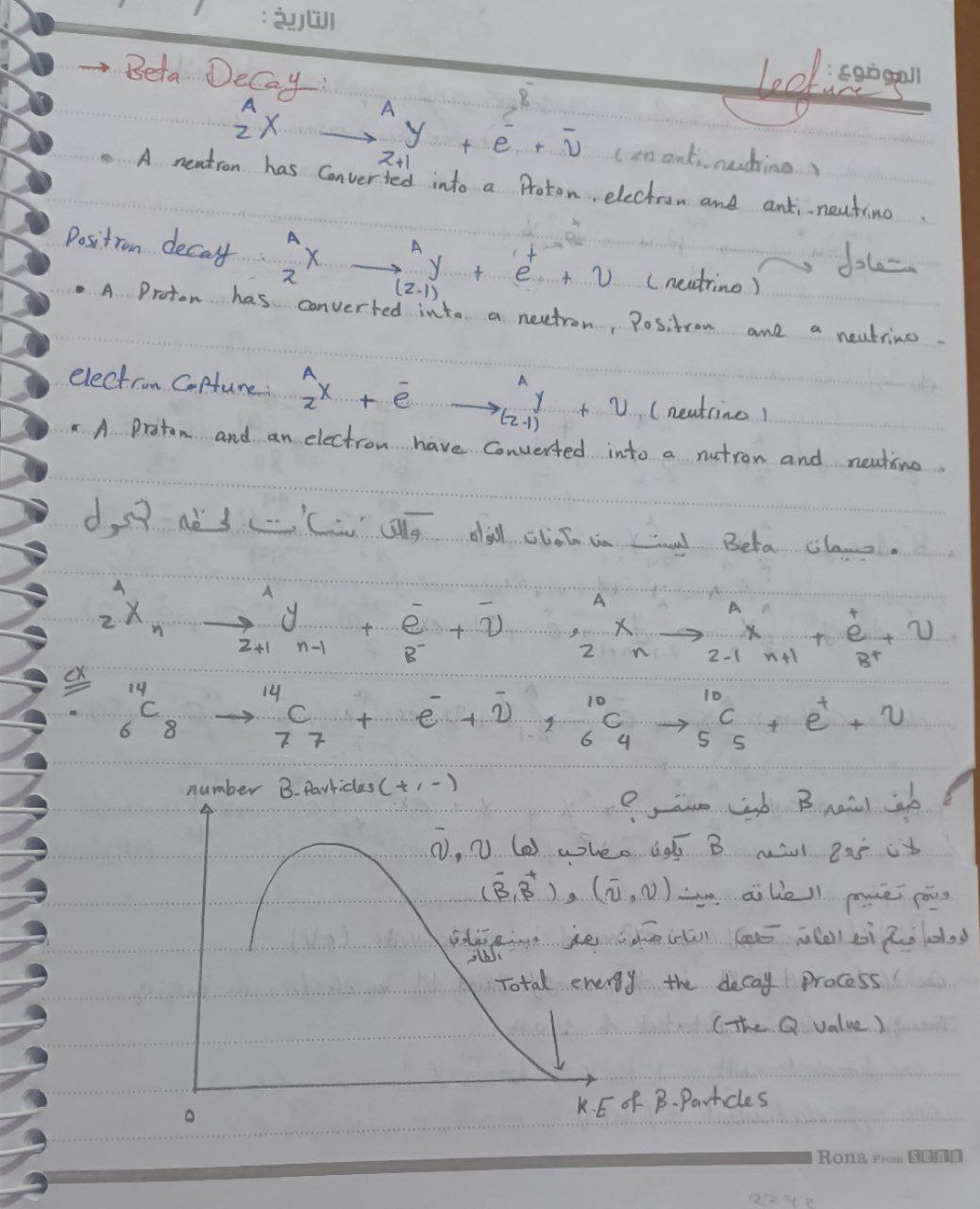What are the processes involved in beta decay, including the particles emitted and energy considerations?

Understand the Problem
The question is discussing the topic of beta decay in nuclear physics, describing the processes involved in beta plus and beta minus decay, as well as the associated particles and energy changes in the decay process.
Answer
Beta decay includes beta-minus, beta-plus, and electron capture. Particles emitted are electrons, positrons, and neutrinos. Energy considerations involve kinetic energy and Q value.
Beta decay involves three processes: beta-minus decay (neutron to proton with emission of an electron and antineutrino), beta-plus decay (proton to neutron with emission of a positron and neutrino), and electron capture (proton and electron form a neutron, emitting a neutrino). Energy considerations include kinetic energy and Q value.
Answer for screen readers
Beta decay involves three processes: beta-minus decay (neutron to proton with emission of an electron and antineutrino), beta-plus decay (proton to neutron with emission of a positron and neutrino), and electron capture (proton and electron form a neutron, emitting a neutrino). Energy considerations include kinetic energy and Q value.
More Information
Beta decay is a weak nuclear interaction and one of the ways that unstable atoms achieve stability by adjusting their ratio of protons to neutrons.
Tips
Common mistakes include confusing beta-minus and beta-plus decay, and overlooking the role of neutrinos. Ensure energy conservations are properly accounted for.
Sources
- DOE Explains...Beta Decay - Department of Energy - energy.gov
- Beta decay - Wikipedia - en.wikipedia.org
AI-generated content may contain errors. Please verify critical information